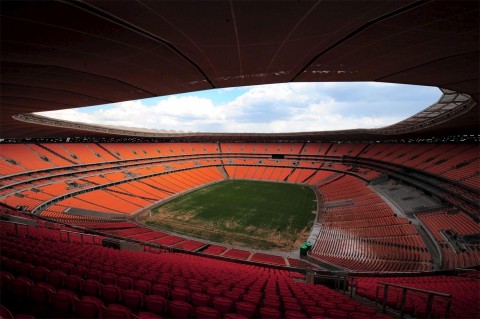
by Jazmin Acuna
Quite often, it occurs to me that when I learn a new word, I see it everywhere. All of a sudden, that once unknown word acquires an omnipresent nature and it shows up over and over again. That was my experience with the word “infrastructure.” Most of the political economy reading that I stumbled upon stressed the importance of infrastructure as a logical and essential step for development.
In-fra-struc-ture.
Experts and not-really-experts throw this word around countless times in their analyses of how to bring poverty to a faster end. While at first I did not question the suggestion (Infrastructure? Of course, duh!), I grew more skeptical about it with time. I started to believe that more than anything, people just like the pretentious, erudite sound of the word. Politicians and policy-makers put it in the middle of sentences because it would not fail to shut potential criticisms. But most importantly there was the fact that few would actually challenge the proposition. I began to realize that in reality, nobody really knows what in the world infrastructure is, or does, or how it feeds hungry people.
Luckily, during my summer in Johannesburg, I had a chance to learn about the real significance of such an elusive concept. Although I felt privileged to be present for the first World Cup in Africa, I could not avoid the temptation to look at this event with a bit of a cynical, skeptical gaze. So, this will not be a sugar-coated description of the most cherished of sports competitions in the world. And if you are not too fond of idealistic (or non-pragmatic), socially-minded, fuming feminists, I would suggest that you stop reading now. But if you are keen on hearing about another angle of the vuvuzela hysteria, go on.
I feel compelled to share my epiphanies about the effort to improve infrastructure in South Africa, which is what the FIFA event was, to a large extent.
Colossal stadiums stand today in South African cities as the sole reminders of a World Cup that seems to have happened ages ago. The sight of Soccer City (the largest stadium in “Joburg”), which towers like a giant against the backdrop of a dwarf Soweto (most populous township in South Africa), is the most accurate snapshot of the “nation-building” project that envisages a “New South Africa.”
Like a number of other stadiums across the country, Soccer City rises in the stratosphere. There it stands like the last piece of a puzzle, pushed in forcefully, as if by putting it in the middle of a popular township all gaps in culture would be automatically bridged.
At some point throughout the tournament, most of us did believe that the World Cup could imbue South Africa with the necessary power to be unified. We waved our flags and walked to the stadiums holding onto our overflowing faith and hope, imagining what-ifs and dreaming of an equal society that could be accomplished as easily as a goal being scored.
But if anything, the World Cup unity manifested itself only at a superficial, infrastructural level. In the aftermath, once the matches were over and Blatter’s manly squad took off to their palatial residences, I looked at the stadiums with a daunting question on my mind: “now what?”
This painful hangover lasted about a month. It was filled with easy entertainment and false joy. The “forget-the-bad-and-celebrate” effect faded away quickly, especially with the renewed threats of violent, xenophobic attacks in the country. The FIFA-fabricated hope was proving to be what we all had feared: a cold infrastructural effort. An effort confined to the oh-so-kind gesture of putting a close-to-totally-useless stadium in a township where most residents would only see it from a distance.
While many commentators praised the miraculous aspect of whites going to a historically black township like Soweto, they failed to notice that these visits only involved leaving of their fancy neighborhoods to go straight to the doors of an equally fancy stadium. Truth be told, the Soccer City-Soweto partnership came to resemble more the dynamics of an arranged marriage rather than those of genuine companionship.
The development of infrastructure lies at the core of many socioeconomic agendas for progress, and yet infrastructure can mean so little and be so dangerously ephemeral. Infrastructure is like having many houses but no homes. Or state-of-the-art colleges that only offer pedestals to go further up in the upper-class category rather than providing the intellectual vibrancy to challenge the very order of things on a grand scale.
Epitomized in the building of stadiums and roads in South Africa, or in a quarter of a million of dollar Tempel Green in New London, infrastructure is a failed enterprise anywhere if not accompanied by a type of development that is far more crucial and everlasting: human development.
This is the kind that renders real change and turns lives upside down. But blinded by the flashy neoliberal promotion of creating lots of meaningless, unconstructive stuff as a form of development, we tend to forget that infrastructure is just that. Progress has become misleadingly equated with this view.
It’s about time we start challenging our perceptions. What is development really about? Why do we put so much value in words like progress and infrastructure? The parallel between South Africa and Conn is very easy to draw. How different is the infrastructure building in Johannesburg from the college’s centennial infrastructure building race here? I hope you ask yourself this question, too.









What do you think FIFA should have done to foster what you have called “human development”? What steps could they have taken than would have allowed them to pull of a successful World Cup (not easy) while also making real change in South Africa?